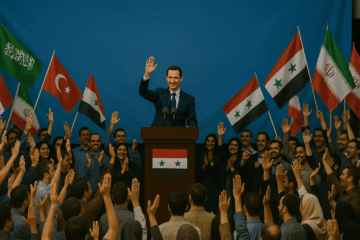All eyes are on Hezbollah as the Israel-Palestinian conflict threatens the stability of Lebanon. Undoubtedly, war with the Iranian-backed militant group will cause widespread damage and destruction. Still, as the world watches the Middle East with bated breath, the influence of Hezbollah in Latin America continues to grow largely unchecked. Allowing terrorist organizations to operate in close geographic proximity to the United States increases the risk of spillover violence and the financial gains Hezbollah reaps in the region are sure to harm the US and allies’ interests abroad.
An inherently political phenomenon, terrorism is concerned with balances of power and the use of violence to achieve ideological and political aims. Though political goals influence the strategy of violent Islamic fundamentalists, the religious component remains the most important motivator for its agents and leaders. This makes that type of terrorism especially deadly and difficult to combat. Even seven years after the most recent wave of attacks from ISIS, Islamic terrorism is still the most prevalent type of terrorism threatening Europe, Africa, and Asia. In Latin America, Hezbollah is the only originally Islamist terrorist organization present.
Hezbollah was born during the Lebanese Civil War, which broke out in 1975 as a group of Shiite Muslims took up arms against the Israeli occupation in southern Lebanon. Under the sponsorship of Iran, this militia would attack the barracks of the coalition forces in Beirut with more than three hundred causalities.
Hezbollah’s 1985 manifesto called for the destruction of the Israeli state, the expulsion of Western powers from Lebanon, and pledged allegiance to Iran’s supreme leader. By the late 1980s, Hezbollah established operations in Colombia, the tri-border area (between Argentina, Brazil, and Paraguay), and, later, Venezuela. Hezbollah claims credit for attacks against an Israeli Embassy (1992) and a Jewish community center (1994) in Argentina.
Latin America’s recent history of violent revolutions and regime change shows why the region is particularly ripe for extremist movements. When Fidel Castro entered Havana, Cuba, on January 1, 1959, he imposed a type of repressive regime that was seen as a model by socialist movements on the continent. In the years that followed Castro’s victory and the failed Bay of Pigs invasion, Cuba became the center of the “good” guerrilla fighter. Asymmetric warfare proliferated across Latin America. The Shining Path organization from Peru relied on terror tactics that included: bombings, targeted assassinations, and guerrilla raids.
In these environments, death became romanticized through public executions commonly seen in the cartels, enabling Hezbollah to find considerable sympathy in many Latin American countries. Today, the group uses the region as a breeding ground for illicit drug trafficking and money laundering. Weak border enforcement and flawed authorities create fertile soil for Lebanese traffickers to move goods northward and southward, from Colombia’s coca fields to Argentina and Brazil’s ports.
Hezbollah activity in Peru, where the Shining Path continues drug trafficking operations, proves that the group also relies on local means to spread its influence. The center of the connection between the Shining Path and Hezbollah is in the small rural town of Abancay, where large parts of the population are converted Muslims and declared members of the Peruvian Hezbollah Party. In October 2014, a Lebanese man was arrested in connection to a plot against Israelis and Jews in Lima. According to law enforcement, he received assistance from the Shining Path to enter the country for this plot.
The State Department designated Hezbollah a terrorist organization in 1997, but Latin America was slow to follow: Argentina in 2019, Paraguay in 2019, and Colombia in 2020. As of 2024, these three countries remain the only states in South America to designate Hezbollah a terrorist entity, though several Central American states also accept Hezbollah as a violent extremist group.
In April 2024, Argentina’s Court of Cassation declared Hezbollah and Iran responsible for the 1994 bombing of a Jewish community center. Despite thirty years of setbacks from the court, the tide is turning against Iran and its proxies. However, Argentina still finds itself in tricky situations involving planes and passengers with ties to the Islamic Revolutionary Guard Corps (IRGC) while Venezuela’s overt relationship with Iran deepens.
On July 12, 2024, Argentina took its recent progress even further and designated Hamas a terrorist organization, the first Latin American country to do so. In today’s era of intense globalization, conflicts can be both regional and global. If Argentina’s actions are anything to go by, the influence of Iran as one of the world’s leading sponsors of terrorism may be on the decline. The path to do so, however, is far from linear. As Iran continues to sit on the brink of becoming a nuclear-armed state, the country’s reign of terror will not end.
General John F. Kelly, former Commander of US Southern Command, expertly warned, “Iran’s involvement in the Western Hemisphere is a matter for concern.” Only naïveté would support a belief that unchecked terrorist operations in Latin America will never spread north, when the incentives to do so only grow. A unified continent may be the best counter to Iran and its proxies, but the complexities of this issue prevent any easy or immediate avenues for this goal. As with many of the world’s challenges, solutions must first begin with knowledge of the problem.
Santiago Spadiliero is a doctoral student at Missouri State University’s School of Defense and Strategic Studies. Alexis Schlotterback is an Analyst at the National Institute for Deterrence Studies.
About the Author

Alexis Schlotterback
Alexis Schlotterback is an analyst at the National Institute for Deterrence Studies and one of the NIDS Academy Administrators. Her experience includes a Masters from Missouri State’s School of Defense and Strategic Studies and participation in the National Nuclear Security Administration Graduate Fellowship.




